Tumor Lung Visualization and Localization through Virtual Reality and Thermal Feedback Interface
Abstract
1. Introduction
- Presents theoretical and experimental studies of a model describing the heat transfer occurring when a finger touches a tumor using the lung cancer CT-scan imagery transformed into 3D visualization data via VR technology.
- Advanced virtual-reality-based 3D visualization and interaction system for lung tumor recognition, quantification, and analysis.
- Develop an interface for thermal rendering and thermal identification of the virtual touched object, as well as utilizing a thermal display incorporated into a haptic device.
2. Materials and Methods
2.1. Virtual Reality Visualization and Interaction for Lung Tumor Region Segmentation
2.2. Modeling Heat Exchange for Simulation
2.3. Thermal Tactile Display and Virtual Reality for Lung Tumor Visualization and Localization
3. VR Application Results
4. Participants
5. Procedure
- (Q) It is easy to imagine being completely submerged in a 3D infected lung.
- (Q) Tumor is well localized.
- (Q) The application is easy to use.
- (Q) Increase comprehension of and knowledge of disease.
- (Q) Provide a realistic view of clinical case.
- (Q) Could help reduce error.
- (Q) An enjoyable experience.
6. Discussion
7. Conclusions
Author Contributions
Funding
Institutional Review Board Statement
Informed Consent Statement
Data Availability Statement
Conflicts of Interest
References
- Min, H.Y.; Lee, H.Y. Mechanisms of resistance to chemotherapy in non-small cell lung cancer. Arch. Pharmacal Res. 2021, 44, 146–164. [Google Scholar] [CrossRef] [PubMed]
- Oulefki, A.; Agaian, S.; Trongtirakul, T.; Laouar, A.K. Automatic COVID-19 lung infected region segmentation and measurement using CT-scans images. Pattern Recognit. 2021, 114, 107747. [Google Scholar] [CrossRef]
- Jung, T.; Vij, N. Early diagnosis and real-time monitoring of regional lung function changes to prevent chronic obstructive pulmonary disease progression to severe emphysema. J. Clin. Med. 2021, 10, 5811. [Google Scholar] [CrossRef]
- Uzelaltinbulat, S.; Ugur, B. Lung tumor segmentation algorithm. Procedia Comput. Sci. 2017, 120, 140–147. [Google Scholar] [CrossRef]
- Marino, M.A.; Leithner, D.; Sung, J.; Avendano, D.; Morris, E.A.; Pinker, K.; Jochelson, M.S. Radiomics for tumor characterization in breast cancer patients: A feasibility study comparing contrast-enhanced mammography and magnetic resonance imaging. Diagnostics 2020, 10, 492. [Google Scholar] [CrossRef] [PubMed]
- Shafiei, F.; Ershad, S.F. Detection of Lung Cancer Tumor in CT Scan Images Using Novel Combination of Super Pixel and Active Contour Algorithms. Trait. Du Signal 2020, 37, 1029–1035. [Google Scholar] [CrossRef]
- Thakur, S.K.; Singh, D.P.; Choudhary, J. Lung cancer identification: A review on detection and classification. Cancer Metastasis Rev. 2020, 39, 989–998. [Google Scholar] [CrossRef]
- Rudin, C.M.; Brambilla, E.; Faivre-Finn, C.; Sage, J. Small-cell lung cancer. Nat. Rev. Dis. Prim. 2021, 7, 3. [Google Scholar] [CrossRef]
- Ghorbani, F.; Kia, M.; Delrobaei, M.; Rahman, Q. Evaluating the possibility of integrating augmented reality and Internet of Things technologies to help patients with Alzheimer’s disease. In Proceedings of the 2019 26th National and 4th International Iranian Conference on Biomedical Engineering (ICBME), Tehran, Iran, 27–28 November 2019; pp. 139–144. [Google Scholar]
- Jonson, M.; Avramescu, S.; Chen, D.; Alam, F. The Role of Virtual Reality in Screening, Diagnosing, and Rehabilitating Spatial Memory Deficits. Front. Hum. Neurosci. 2021, 15, 628818. [Google Scholar] [CrossRef]
- Bonmarin, M.; Läuchli, S.; Navarini, A. Augmented and Virtual Reality in Dermatology—Where Do We Stand and What Comes Next? Dermato 2022, 2, 1–7. [Google Scholar] [CrossRef]
- Zawy Alsofy, S.; Nakamura, M.; Suleiman, A.; Sakellaropoulou, I.; Welzel Saravia, H.; Shalamberidze, D.; Salma, A.; Stroop, R. Cerebral anatomy detection and surgical planning in patients with anterior skull base meningiomas using a virtual reality technique. J. Clin. Med. 2021, 10, 681. [Google Scholar] [CrossRef] [PubMed]
- Yoon, S.H.; Goo, J.M.; Lee, C.H.; Cho, J.Y.; Kim, D.W.; Kim, H.J.; Paeng, J.C.; Kim, Y.T. Virtual reality-assisted localization and three-dimensional printing-enhanced multidisciplinary decision to treat radiologically occult superficial endobronchial lung cancer. Thorac. Cancer 2018, 9, 1525–1527. [Google Scholar] [CrossRef] [PubMed]
- Koo, H. Training in lung cancer surgery through the metaverse, including extended reality, in the smart operating room of Seoul National University Bundang Hospital, Korea. J. Educ. Eval. Health Prof. 2021, 18, 33. [Google Scholar] [CrossRef] [PubMed]
- Sadeghi, A.H.; Maat, A.P.; Taverne, Y.J.; Cornelissen, R.; Dingemans, A.M.C.; Bogers, A.J.; Mahtab, E.A. Virtual reality and artificial intelligence for 3-dimensional planning of lung segmentectomies. JTCVS Tech. 2021, 7, 309–321. [Google Scholar] [CrossRef]
- Bakhuis, W.; Sadeghi, A.H.; Moes, I.; Maat, A.P.; Siregar, S.; Bogers, A.J.; Mahtab, E.A. Essential Surgical Plan Modifications After Virtual Reality Planning in 50 Consecutive Segmentectomies. Ann. Thorac. Surg. 2022, in press. [CrossRef]
- Ujiie, H.; Yamaguchi, A.; Gregor, A.; Chan, H.; Kato, T.; Hida, Y.; Kaga, K.; Wakasa, S.; Eitel, C.; Clapp, T.R.; et al. Developing a virtual reality simulation system for preoperative planning of thoracoscopic thoracic surgery. J. Thorac. Dis. 2021, 13, 778. [Google Scholar] [CrossRef]
- Guerrera, F.; Nicosia, S.; Costardi, L.; Lyberis, P.; Femia, F.; Filosso, P.L.; Arezzo, A.; Ruffini, E. Proctor-guided virtual reality–enhanced three-dimensional video-assisted thoracic surgery: An excellent tutoring model for lung segmentectomy. Tumori J. 2021, 107, NP1–NP4. [Google Scholar] [CrossRef]
- Wang, X.; Niu, Y.; Tan, L.; Zhang, S. Improved marching cubes using novel adjacent lookup table and random sampling for medical object-specific 3D visualization. J. Softw. 2014, 9, 2528–2537. [Google Scholar] [CrossRef]
- Zhang, Z.M.; Lu, W.; Shi, Y.Z.; Yang, T.L.; Liang, S.L. An improved volume rendering algorithm based on voxel segmentation. In Proceedings of the 2012 IEEE International Conference on Computer Science and Automation Engineering (CSAE), Zhangjiajie, China, 25–27 May 2012; Volume 1, pp. 372–375. [Google Scholar]
- Benbelkacem, S.; Oulefki, A.; Agaian, S.; Zenati-Henda, N.; Trongtirakul, T.; Aouam, D.; Masmoudi, M.; Zemmouri, M. COVI3D: Automatic COVID-19 CT Image-Based Classification and Visualization Platform Utilizing Virtual and Augmented Reality Technologies. Diagnostics 2022, 12, 649. [Google Scholar] [CrossRef]
- Oulefki, A.; Agaian, S.; Trongtirakul, T.; Benbelkacem, S.; Aouam, D.; Zenati-Henda, N.; Abdelli, M.L. Virtual reality visualization for computerized COVID-19 lesion segmentation and interpretation. Biomed. Signal Process. Control 2022, 73, 103371. [Google Scholar] [CrossRef]
- Benbelkacem, S.; Oulefki, A.; Agaian, S.; Trongtirakul, T.; Aouam, D.; Zenati-Henda, N.; Amara, K. Lung infection region quantification, recognition, and virtual reality rendering of CT scan of COVID-19. In Proceedings of the Multimodal Image Exploitation and Learning, Online, 12–16 April 2021; Volume 11734, pp. 123–132. [Google Scholar]
- Lubetzky, A.V.; Wang, Z.; Krasovsky, T. Head mounted displays for capturing head kinematics in postural tasks. J. Biomech. 2019, 86, 175–182. [Google Scholar] [CrossRef]
- Guiatni, M.; Kheddar, A. Theoretical and experimental study of a heat transfer model for thermal feedback in virtual environments. In Proceedings of the 2008 IEEE/RSJ International Conference on Intelligent Robots and Systems, Nice, France, 22–26 September 2008; pp. 2996–3001. [Google Scholar]
- Guiatni, M.; Riboulet, V.; Duriez, C.; Kheddar, A.; Cotin, S. A combined force and thermal feedback interface for minimally invasive procedures simulation. Ieee/Asme Trans. Mechatron. 2012, 18, 1170–1181. [Google Scholar] [CrossRef]
- Krougly, Z.; Davison, M.; Aiyar, S. The role of high precision arithmetic in calculating numerical Laplace and inverse Laplace transforms. Appl. Math. 2017, 8, 562. [Google Scholar] [CrossRef]
- Tarwidi, D. Godunov method for multiprobe cryosurgery simulation with complex-shaped tumors. AIP Conf. Proc. 2016, 1707, 060002. [Google Scholar]
- Bhattacharya, S.; Nayar, S.; Sardar, T.; Ganguly, R. Hyperthermia Using Graphene-Iron Oxide Nanocomposites in a Perfused Tumor Tissue. In Proceedings of the 23rd National Heat and Mass Transfer Conference and 1st International ISHMT-ASTFE Heat and Mass Transfer Conference IHMTC2015, Thiruvananthapuram, India, 17–20 December 2015. [Google Scholar]
- Katz, B.F.; Felinto, D.Q.; Touraine, D.; Poirier-Quinot, D.; Bourdot, P. BlenderVR: Open-source framework for interactive and immersive VR. In Proceedings of the 2015 IEEE Virtual Reality (VR), Arles, France, 23–27 March 2015; pp. 203–204. [Google Scholar]
- Jackson, S. Unity 3D UI Essentials; Packt Publishing Ltd.: Birmingham, UK, 2015. [Google Scholar]
- Sanders, A. An Introduction to Unreal Engine 4; AK Peters/CRC Press: Boca Raton, FL, USA, 2016. [Google Scholar]
- Maloca, P.M.; de Carvalho, J.E.R.; Heeren, T.; Hasler, P.W.; Mushtaq, F.; Mon-Williams, M.; Scholl, H.P.; Balaskas, K.; Egan, C.; Tufail, A.; et al. High-performance virtual reality volume rendering of original optical coherence tomography point-cloud data enhanced with real-time ray casting. Transl. Vis. Sci. Technol. 2018, 7, 2. [Google Scholar] [CrossRef]
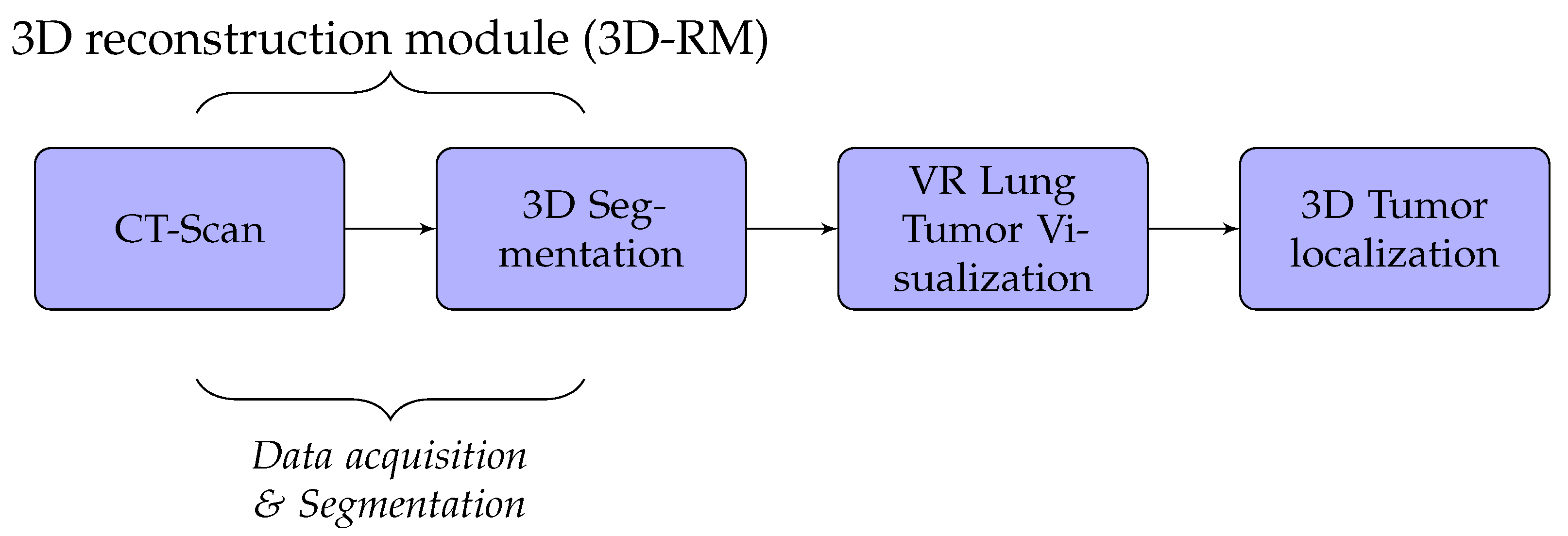
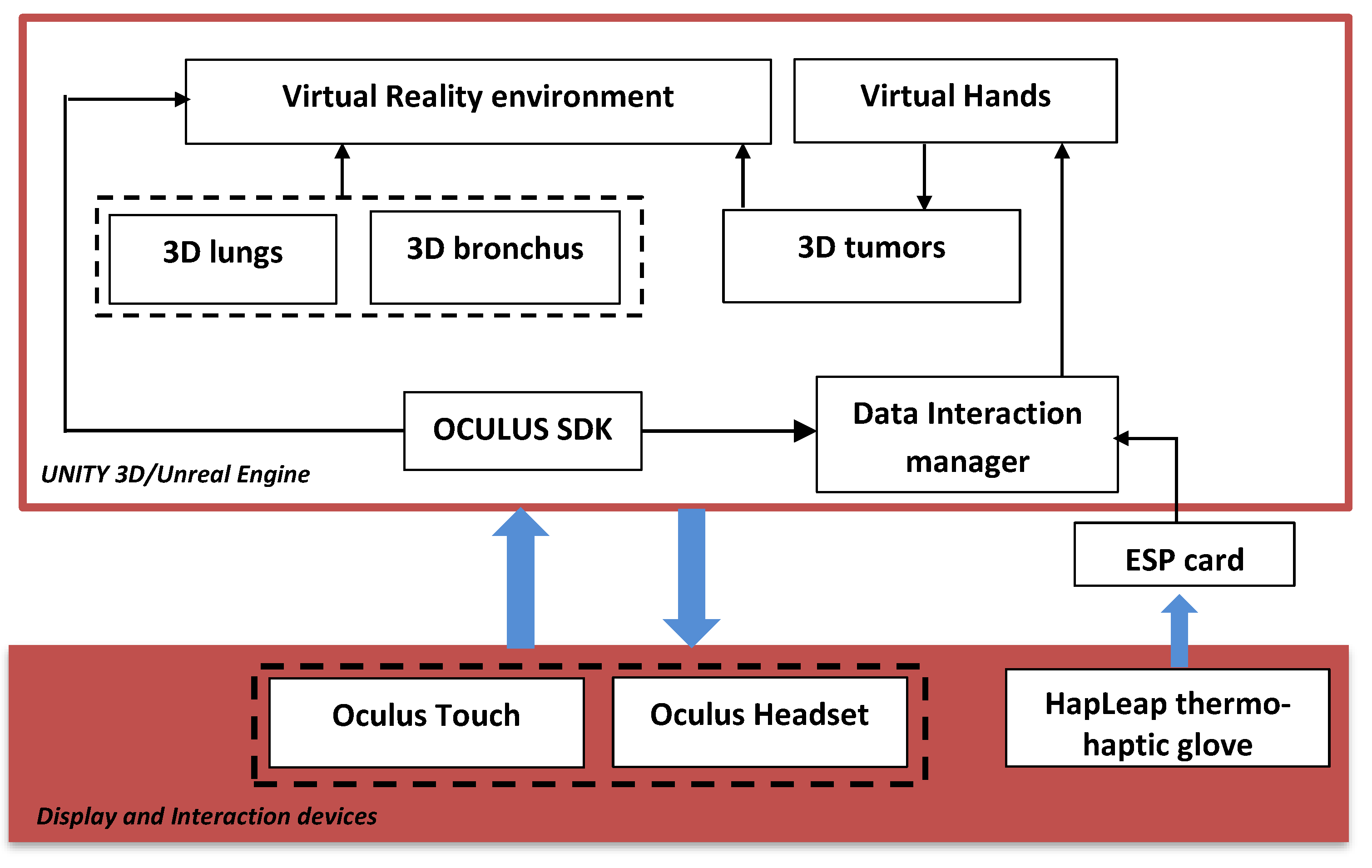

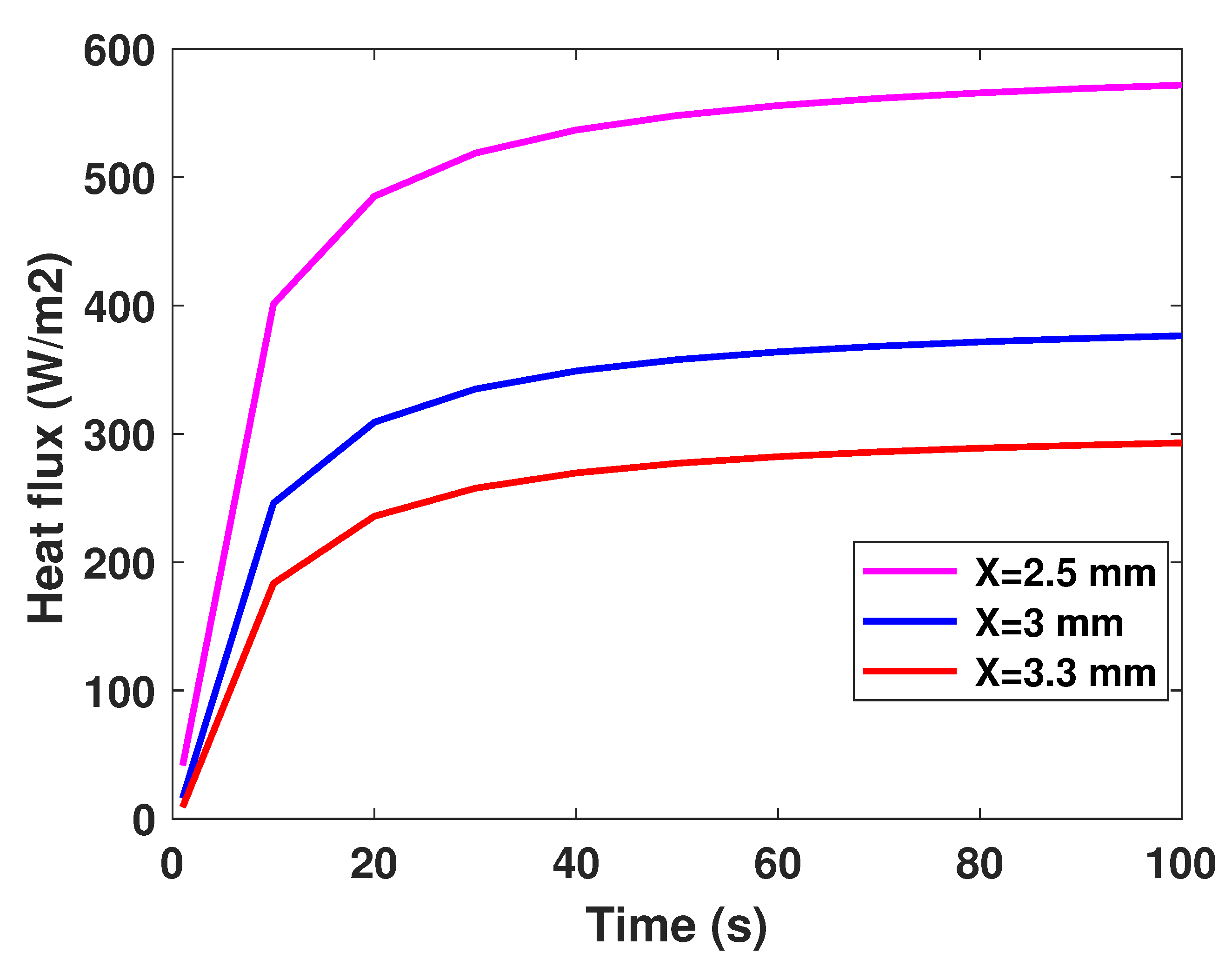
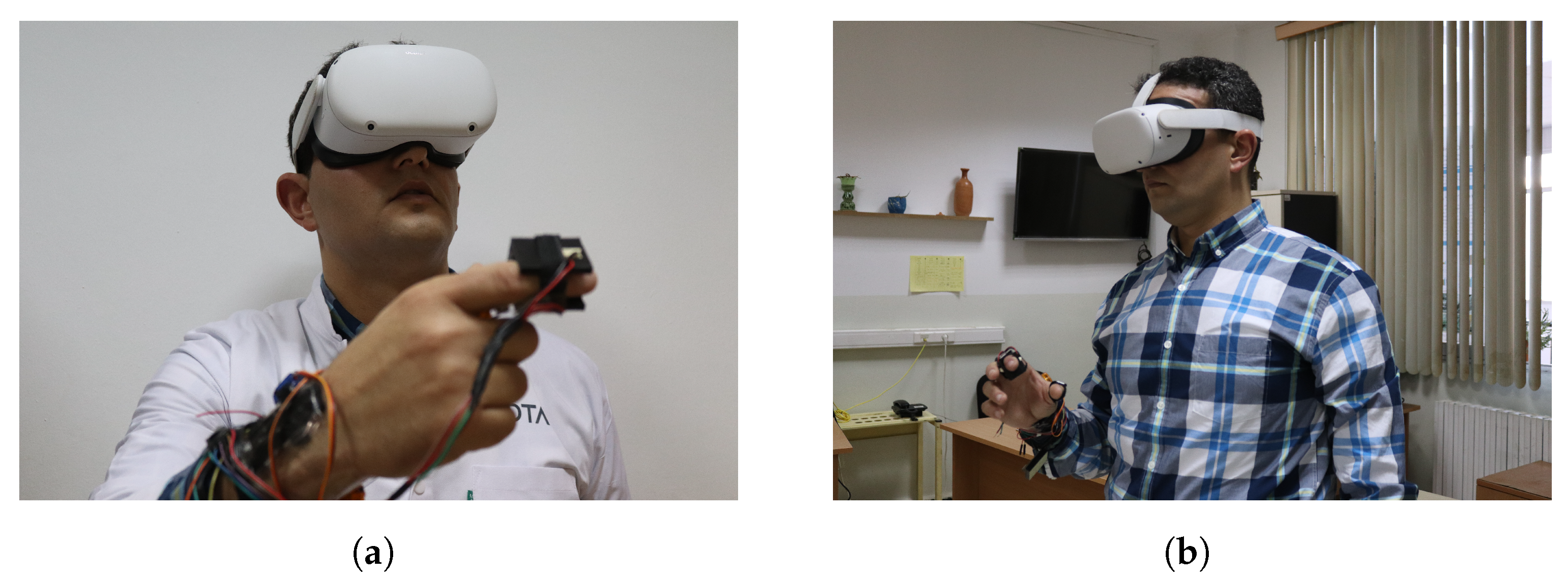

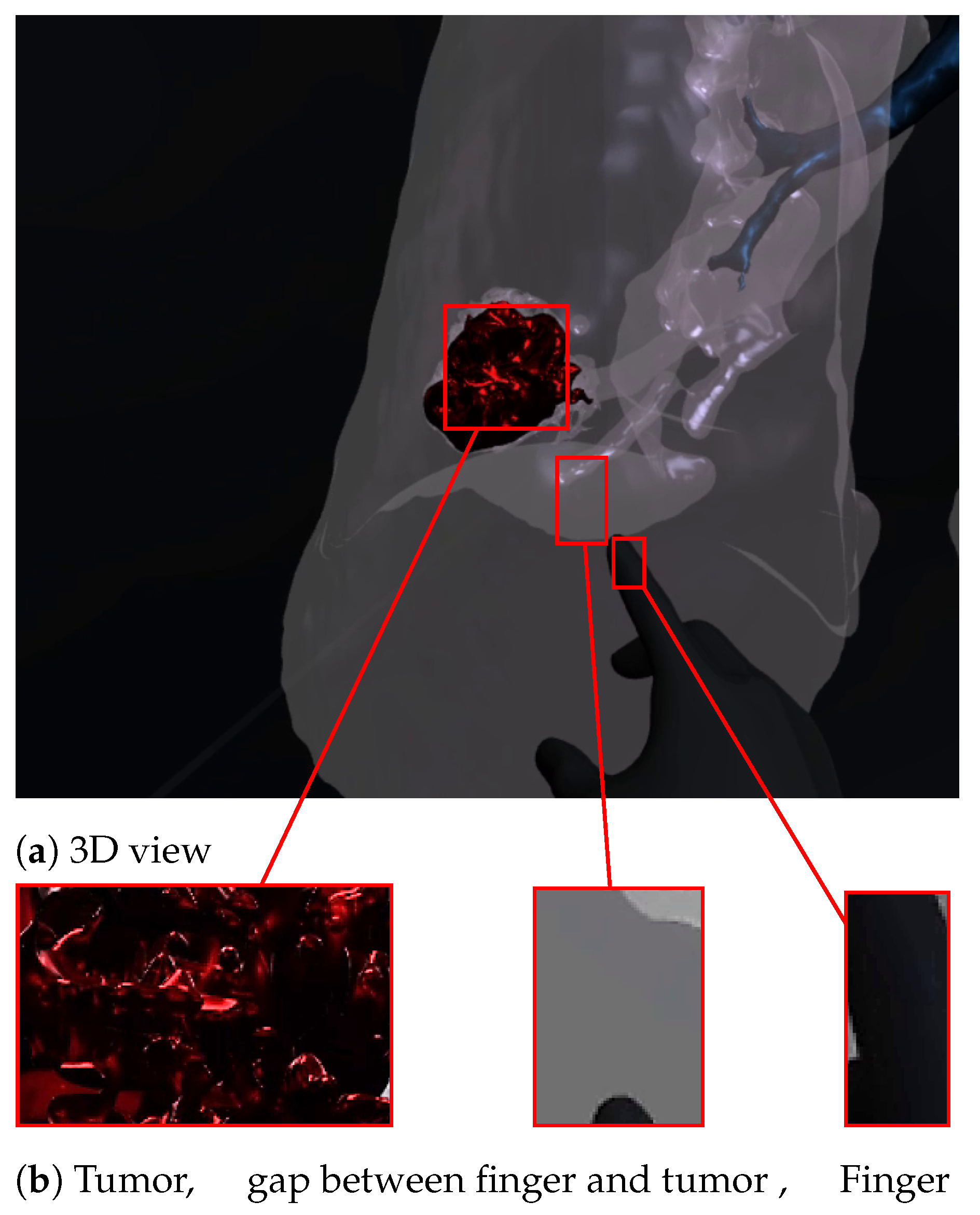

| Characteristics | ||
|---|---|---|
| Blood | Specific heat of blood | 3.64 KK/Kg/°C |
| Density of blood | 1000 Kg/m | |
| Temperature of blood | 37 °C | |
| Tumor Tissue | Specific heat of frozen tumor tissue | 1.23 KK/Kg/°C |
| Specific heat of unfrozen tumor tissue | 4.2 KK/Kg/°C | |
| Density of tumor tissue | 1000 Kg/m | |
| Thermal conductivity of frozen tumor tissue | KJ/m/s/°C | |
| Thermal conductivity of unfrozen tumor tissue | KJ/m/s/°C | |
| Density of tumor tissue | 1000 Kg/m | |
| Questionnaire Graded on a 7-Point Likert Scale | |||||||
|---|---|---|---|---|---|---|---|
| Strongly Agree | Agree | Somewhat Agree | Neutral | Somewhat Disagree | Disagree | Strongly Disagree | |
| Q | 0 | 5 | 2 | 1 | 0 | 0 | 0 |
| Q | 4 | 3 | 1 | 0 | 0 | 0 | 0 |
| Q | 3 | 5 | 0 | 0 | 0 | 0 | 0 |
| Q | 1 | 3 | 1 | 1 | 1 | 1 | 0 |
| Q | 2 | 4 | 2 | 0 | 0 | 0 | 0 |
| Q | 2 | 3 | 1 | 0 | 0 | 0 | 2 |
| Q | 5 | 3 | 0 | 0 | 0 | 0 | 0 |
Disclaimer/Publisher’s Note: The statements, opinions and data contained in all publications are solely those of the individual author(s) and contributor(s) and not of MDPI and/or the editor(s). MDPI and/or the editor(s) disclaim responsibility for any injury to people or property resulting from any ideas, methods, instructions or products referred to in the content. |
© 2023 by the authors. Licensee MDPI, Basel, Switzerland. This article is an open access article distributed under the terms and conditions of the Creative Commons Attribution (CC BY) license (https://creativecommons.org/licenses/by/4.0/).
Share and Cite
Benbelkacem, S.; Zenati-Henda, N.; Zerrouki, N.; Oulefki, A.; Agaian, S.; Masmoudi, M.; Bentaleb, A.; Liew, A. Tumor Lung Visualization and Localization through Virtual Reality and Thermal Feedback Interface. Diagnostics 2023, 13, 567. https://doi.org/10.3390/diagnostics13030567
Benbelkacem S, Zenati-Henda N, Zerrouki N, Oulefki A, Agaian S, Masmoudi M, Bentaleb A, Liew A. Tumor Lung Visualization and Localization through Virtual Reality and Thermal Feedback Interface. Diagnostics. 2023; 13(3):567. https://doi.org/10.3390/diagnostics13030567
Chicago/Turabian StyleBenbelkacem, Samir, Nadia Zenati-Henda, Nabil Zerrouki, Adel Oulefki, Sos Agaian, Mostefa Masmoudi, Ahmed Bentaleb, and Alex Liew. 2023. "Tumor Lung Visualization and Localization through Virtual Reality and Thermal Feedback Interface" Diagnostics 13, no. 3: 567. https://doi.org/10.3390/diagnostics13030567
APA StyleBenbelkacem, S., Zenati-Henda, N., Zerrouki, N., Oulefki, A., Agaian, S., Masmoudi, M., Bentaleb, A., & Liew, A. (2023). Tumor Lung Visualization and Localization through Virtual Reality and Thermal Feedback Interface. Diagnostics, 13(3), 567. https://doi.org/10.3390/diagnostics13030567







